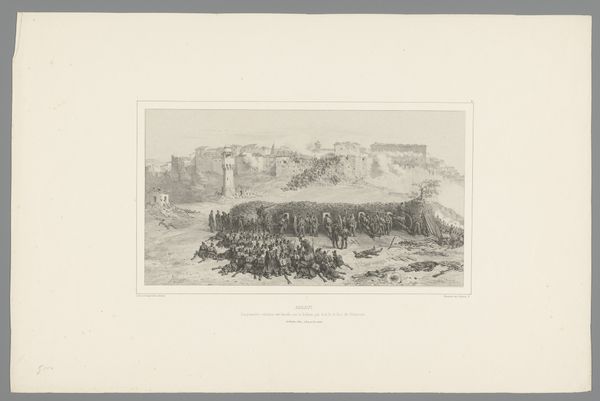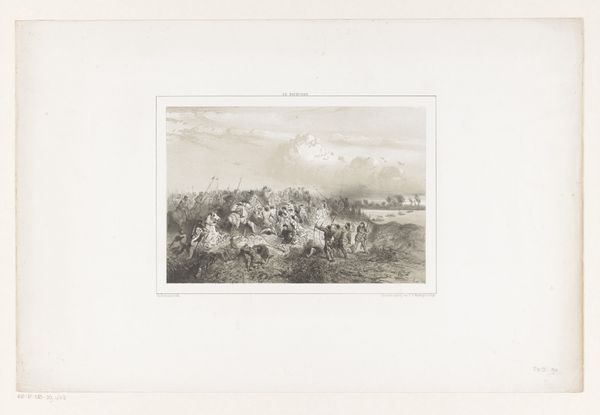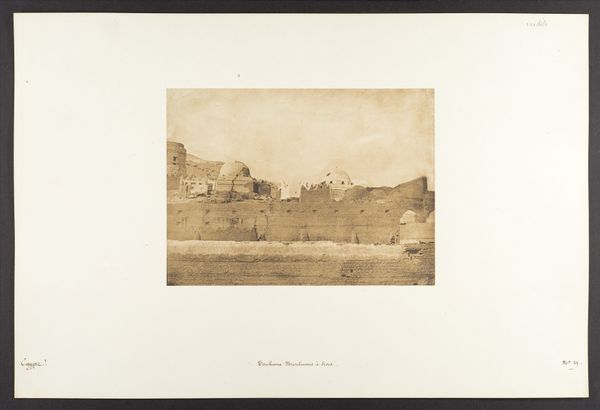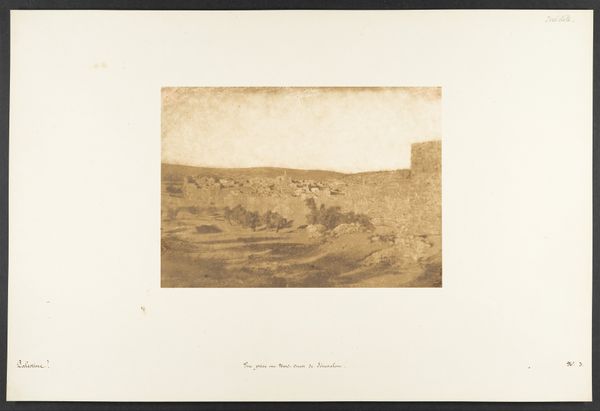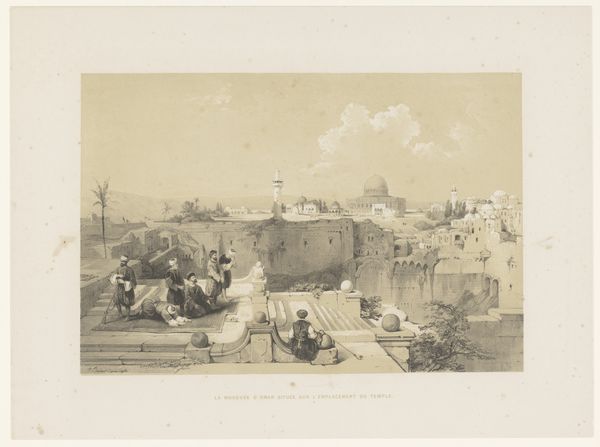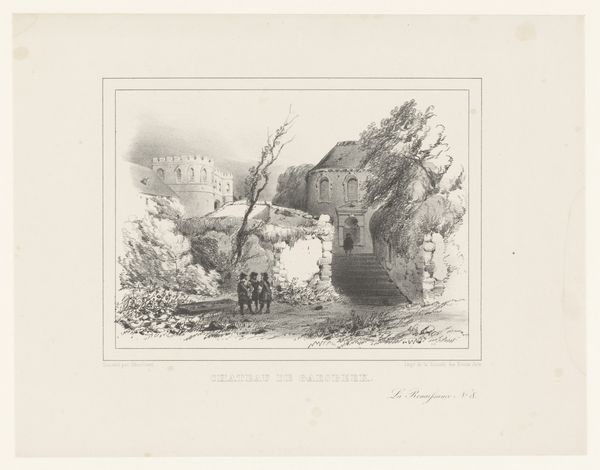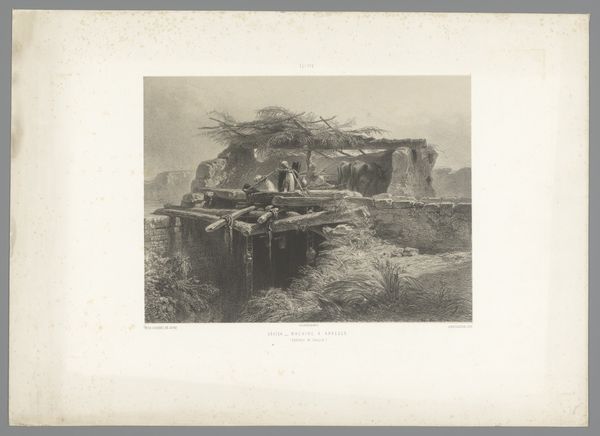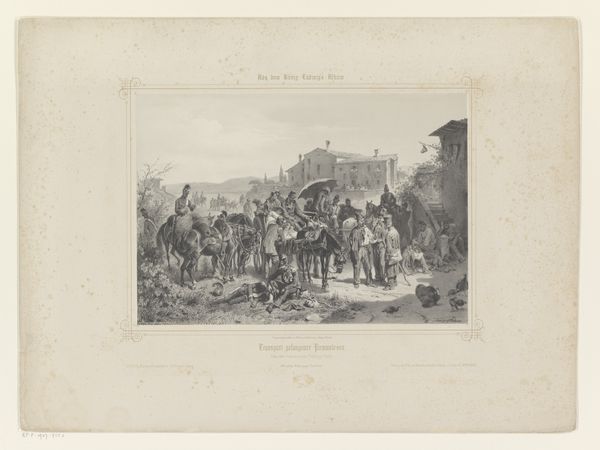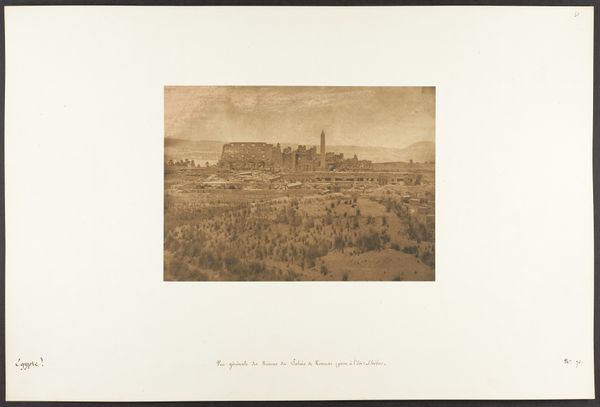
Ruines d'une ville chrétienne, à Médinet-habou (Thèbes) 1849 - 1850
0:00
0:00
daguerreotype, photography, architecture
#
landscape
#
daguerreotype
#
ancient-egyptian-art
#
photography
#
orientalism
#
architecture
Dimensions: Image: 6 1/2 × 8 15/16 in. (16.5 × 22.7 cm) Mount: 12 5/16 × 18 11/16 in. (31.2 × 47.5 cm)
Copyright: Public Domain
This photograph, "Ruines d'une ville chrétienne, à Médinet-habou", was taken by Maxime Du Camp in the mid-19th century, using the salted paper process. The image's sepia tones derive from the chemical reaction of silver nitrate and salt, a relatively early photographic technique which predates the gelatin silver prints that would later dominate. Note how this process affects the image: the seemingly infinite detail we expect from photography is softened, yielding a somewhat melancholic, atmospheric effect. Du Camp was commissioned to make this photograph as part of a larger survey of Egyptian monuments. The goal of such projects was to provide European audiences with a sense of ownership over ancient cultures, converting history into consumable images. Implicitly, the ease with which Du Camp could travel to, document, and reproduce these images spoke to Europe's expanding colonial power. So, when considering this photograph, think of the ways it transforms a place and moment into a commodity, a transformation inextricably linked to the politics of its time.
Comments
No comments
Be the first to comment and join the conversation on the ultimate creative platform.
